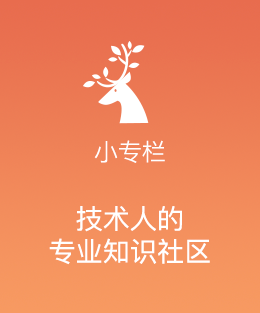Render 函数
基础
Vue 推荐在绝大多数情况下使用 template 来创建你的 HTML。然而在一些场景中,你真的需要 JavaScript 的完全编程的能力,这就是 render 函数,它比 template 更接近编译器。
|
|
在 HTML 层, 我们决定这样定义组件接口:
|
|
当我们开始写一个通过 level prop 动态生成heading 标签的组件,你可能很快想到这样实现:
|
|
|
|
在这种场景中使用 template 并不是最好的选择:首先代码冗长,为了在不同级别的标题中插入锚点元素,我们需要重复地使用 <slot></slot>。
虽然模板在大多数组件中都非常好用,但是在这里它就不是很简洁的了。那么,我们来尝试使用 render 函数重写上面的例子:
|
|
简单清晰很多!简单来说,这样代码精简很多,但是需要非常熟悉 Vue 的实例属性。在这个例子中,你需要知道当你不使用 slot 属性向组件中传递内容时,比如 anchored-heading 中的 Hello world!, 这些子元素被存储在组件实例中的 $slots.default中。如果你还不了解, 在深入 render 函数之前推荐阅读 实例属性API。
createElement 参数
第二件你需要熟悉的是如何在 createElement 函数中生成模板。这里是 createElement 接受的参数:
|
|
深入data object参数
有一件事要注意:正如在模板语法中,v-bind:class 和 v-bind:style ,会被特别对待一样,在 VNode 数据对象中,下列属性名是级别最高的字段。该对象也允许你绑定普通的 HTML 特性,就像 DOM 属性一样,比如 innerHTML (这会取代 v-html 指令)。
|
|
完整示例
有了这些知识,我们现在可以完成我们最开始想实现的组件:
|
|
约束
VNodes 必须唯一
组件树中的所有 VNodes 必须是唯一的。这意味着,下面的 render function 是无效的:
|
|
如果你真的需要重复很多次的元素/组件,你可以使用工厂函数来实现。例如,下面这个例子 render 函数完美有效地渲染了 20 个重复的段落:
|
|
使用 JavaScript 代替模板功能
v-if and v-for
由于使用原生的 JavaScript 来实现某些东西很简单,Vue 的 render 函数没有提供专用的 API。比如, template 中的 v-if 和 v-for:
|
|
这些都会在 render 函数中被 JavaScript 的 if/else 和 map 重写:
|
|
v-model
render函数中没有与v-model相应的api - 你必须自己来实现相应的逻辑:
|
|
这就是深入底层要付出的,尽管麻烦了一些,但相对于 v-model来说,你可以更灵活地控制。
事件 & 按键修饰符
对于 .passive、.capture 和 .once事件修饰符, Vue 提供了相应的前缀可以用于 on:
| Modifier(s) | Prefix |
|---|---|
.passive |
& |
.capture |
! |
.once |
~ |
.capture.once or.once.capture |
~! |
例如:
|
|
对于其他的修饰符, 前缀不是很重要, 因为你可以直接在事件处理函数中使用事件方法:
| Modifier(s) | Equivalent in Handler |
|---|---|
.stop |
event.stopPropagation() |
.prevent |
event.preventDefault() |
.self |
if (event.target !== event.currentTarget) return |
Keys:.enter, .13 |
if (event.keyCode !== 13) return (change 13 to another key code for other key modifiers) |
Modifiers Keys:.ctrl, .alt, .shift, .meta |
if (!event.ctrlKey) return (change ctrlKey to altKey, shiftKey, or metaKey, respectively) |
这里是一个使用所有修饰符的例子:
slots
你可以从this.$slots获取VNodes列表中的静态内容:
|
|
还可以从this.$scopedSlots 中获得能用作函数的作用域插槽,这个函数返回 VNodes:
|
|
如果要用 render 函数向子组件中传递作用域插槽,可以利用VNode数据中的 scopedSlots域:
|
|
JSX
如果你写了很多 render 函数,可能会觉得痛苦:
|
|
特别是模板如此简单的情况下:
|
|
这就是为什么会有一个 Babel 插件 ,用于在 Vue 中使用 JSX 语法的原因,它可以让我们回到更接近于模板的语法上。
|
|
将 h 作为 createElement 的别名是 Vue 生态系统中的一个通用惯例,实际上也是 JSX 所要求的,如果在作用域中 h 失去作用, 在应用中会触发报错。
更多关于 JSX 映射到 JavaScript,阅读 使用文档。
函数化组件
之前创建的锚点标题组件是比较简单,没有管理或者监听任何传递给他的状态,也没有生命周期方法。它只是一个接收参数的函数。
在这个例子中,我们标记组件为 functional, 这意味它是无状态(没有 data),无实例(没有 this 上下文)。
一个 函数化组件 就像这样:
|
|
注意:在 2.3.0 之前的版本中,如果一个函数式组件想要接受 props,则
props选项是必须的。在 2.3.0 或以上的版本中,你可以省略props选项,所有组件上的属性都会被自动解析为 props。
组件需要的一切都是通过上下文传递,包括:
props: 提供props 的对象children: VNode 子节点的数组slots: slots 对象data: 传递给组件的 data 对象parent: 对父组件的引用listeners: (2.3.0+) 一个包含了组件上所注册的v-on侦听器的对象。这只是一个指向data.on的别名。injections: (2.3.0+) 如果使用了inject选项, 则该对象包含了应当被注入的属性。
在添加 functional: true 之后,锚点标题组件的 render 函数之间简单更新增加 context 参数,this.$slots.default 更新为 context.children,之后this.level 更新为 context.props.level。
因为函数化组件只是一个函数,所以渲染开销也低很多。然而,对持久化实例的缺乏也意味着函数化组件不会出现在 Vue devtools 的组件树里。
在作为包装组件时它们也同样非常有用,比如,当你需要做这些时:
- 程序化地在多个组件中选择一个
- 在将 children, props, data 传递给子组件之前操作它们。
下面是一个依赖传入 props 的值的 smart-list 组件例子,它能代表更多具体的组件:
|
|
slots() 和 children 对比
你可能想知道为什么同时需要 slots() 和 children。slots().default 不是和 children 类似的吗?在一些场景中,是这样,但是如果是函数式组件和下面这样的 children 呢?
|
|
对于这个组件,children 会给你两个段落标签,而 slots().default 只会传递第二个匿名段落标签,slots().foo 会传递第一个具名段落标签。同时拥有 children 和 slots() ,因此你可以选择让组件通过 slot() 系统分发或者简单的通过 children 接收,让其他组件去处理。
模板编译
你可能有兴趣知道,Vue 的模板实际是编译成了 render 函数。这是一个实现细节,通常不需要关心,但如果你想看看模板的功能是怎样被编译的,你会发现会非常有趣。下面是一个使用 Vue.compile 来实时编译模板字符串的简单 demo:
{{ result.render }}_m({{ index }}): {{ fn }}{{ result.staticRenderFns }}{{ result }}
